HAPPY BIRTHDAY DR. JOHNE!
2021-12-10 16:30:01 One-hundred eighty-two years ago, on December 10, 1839, Heinrich Albert Johne was born in Dresden, Germany. It seems fitting that Johnes.org celebrate, on this date, his lasting contribution to veterinary medicine.
One-hundred eighty-two years ago, on December 10, 1839, Heinrich Albert Johne was born in Dresden, Germany. It seems fitting that Johnes.org celebrate, on this date, his lasting contribution to veterinary medicine.
Below you will find the story of his discovery, a brief biography, a little about the pathogen name, and the story of how I found this photo.
How it all started.
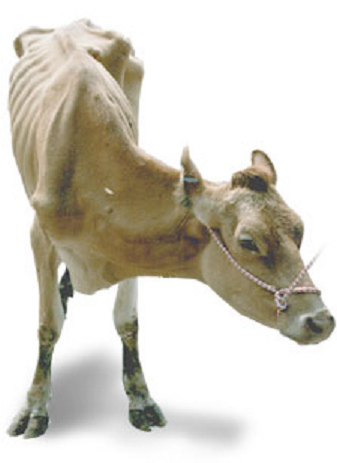 Dr. F. Harmes, a veterinarian in the Oldenburg region of Germany in 1895, had a client with a Guernsey cow that was doing poorly. Dr. Harmes’ preliminary diagnosis was intestinal tuberculosis (TB). TB in cattle was quite common in Germany then. But when he did the tuberculin skin test to confirm his diagnosis, the cow tested negative. So, the reason for the cow’s condition remained a mystery.
Dr. F. Harmes, a veterinarian in the Oldenburg region of Germany in 1895, had a client with a Guernsey cow that was doing poorly. Dr. Harmes’ preliminary diagnosis was intestinal tuberculosis (TB). TB in cattle was quite common in Germany then. But when he did the tuberculin skin test to confirm his diagnosis, the cow tested negative. So, the reason for the cow’s condition remained a mystery.
A few months later, the cow died. Curious as to what killed the cow, Dr. Harmes sent intestines and other tissues to the Pathology Unit at the veterinary school in Dresden. There the tissues were examined by Dr. Heinrich A. Johne, Professor of Pathology, and Dr. Langdon Frothingham, a visiting scientist from the Pathology Unit in Boston, Massachusetts.
They observed that the small intestine was quite a bit thicker than expected and that lymph nodes near this thick intestine were enlarged.
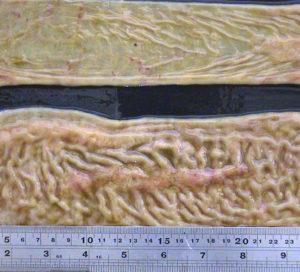 The photo at the right shows a normal intestine at the top and the intestine thickened due to Johne’s disease at the bottom. Lymphoid tissue, called Peyer’s Patches, are also quite prominent (the raised and slightly red tissue running long-ways down the center of the thickened intestine).
The photo at the right shows a normal intestine at the top and the intestine thickened due to Johne’s disease at the bottom. Lymphoid tissue, called Peyer’s Patches, are also quite prominent (the raised and slightly red tissue running long-ways down the center of the thickened intestine).
Interestingly, Dalziel in 1913 saw the same kind of pathology when he removed a section of intestine from a person with Crohn’s disease remarking in his report that it resembled the cattle problem Dr. Johne had described.
Using what at the time were newly developed histopathology techniques, parts of the intestine were “fixed” (pickled in formaldehyde), sliced into very thin sections, placed on a microscope slide, and stained with special dyes – known as an acid-fast stain - designed to help visualize bacteria of the type causing TB. Under the microscope, Drs. Johne and Frothingham saw that the intestinal wall was filled with inflammatory cells of the kind to be expected in TB (macrophages and lymphocytes – the blue-colored stuff in the photo). In addition, they saw abundant red-staining bacteria (which microbiologists call acid-fast bacteria) throughout the inflamed tissues.
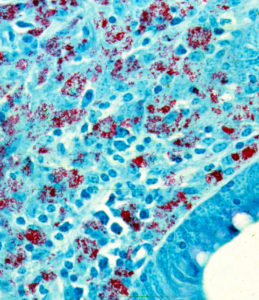 Basically, it looked just like intestinal TB. But, when a sample of the fresh infected tissue containing the red-staining bacteria was injected into guinea pigs, it didn’t cause TB. This took place shortly after Louis Pasteur had devised the “germ theory” of disease and before techniques for growing bacteria in the laboratory were widely available. Inoculating animals, therefore, was a routine way of detecting infectious microbes such as those that cause TB, and guinea pigs are quite susceptible to tuberculosis. So, the diagnosis on this cow remained a mystery.
Basically, it looked just like intestinal TB. But, when a sample of the fresh infected tissue containing the red-staining bacteria was injected into guinea pigs, it didn’t cause TB. This took place shortly after Louis Pasteur had devised the “germ theory” of disease and before techniques for growing bacteria in the laboratory were widely available. Inoculating animals, therefore, was a routine way of detecting infectious microbes such as those that cause TB, and guinea pigs are quite susceptible to tuberculosis. So, the diagnosis on this cow remained a mystery.
Drs. Johne and Frothingham concluded that the disease seen in the very sick Guernsey cow was caused by a bacterium other than the one normally causing TB in cattle, namely Mycobacterium bovis. They speculated that perhaps the pathology was due to a related bacterial pathogen such as the one causing TB in birds, aptly named Mycobacterium avium. Considering their subject’s gross pathology, microscopic pathology (histopathology) and animal inoculation findings, they proposed the name "pseudotuberculous enteritis" for the disease; a designation meaning inflammation of the intestine resembling intestinal TB but not actually the same as intestinal TB – somehow different. Soon after publication of their report, veterinarians began reporting outbreaks of this curious intestinal malady among dairy cows in Denmark, The Netherlands and elsewhere in continental Europe.
More on Dr. Johne.
H.A. Johne was the son of a veterinarian. Twenty years later, he became a veterinarian himself and held a practice for the next seven years. From 1866-1876, he acted as district veterinary inspector. He was then appointed to a lectureship at the veterinary school in Dresden. For a teacher of veterinary medicine, he lectured in an unusually wide range of subjects: embryology, histology, obstetrics, exterior, physical diagnostics. In 1879, he was appointed professor of pathological anatomy and of general pathology. Later he also lectured on parasitology and methodical zoology, and he also started classes in such a new branch of research as bacteriology.
As a scientist, he concerned himself with tuberculosis, anthrax, rabies, glanders, actinomycosis, bothryomycosis among others. As a writer he left a wide literary production. His books were printed in a dozen editions. For many years he also edited “Zeitschrift tor Tiermedizin”, and acted as co-editor of “Rundschau auf dem Gebiet der Fleischbeschau”. In 1887, he visited Denmark, where he was nominated honorary member of the Danish Association of Veterinarians and decorated with the Order of Knight of the Dannebrog.
He was often guest of Professor B. Bang and his family, the flat of Bangs' is today the Veterinary History Museum, established in 1973 at the Royal Veterinary and Agricultural University in Copenhagen. His motto was: Duty Above All. With the distinguished array of titles: Geheim-Medizinalrat, Professor, Dr. med., Dr. med.vet.h.c. and Dr. phil., Heinrich Albert Johne retired in 1904, respected and honored by his many students and by foreign veterinary schools and societies. He died in 1910.
MAP
In 1912, in one of those curious discoveries by serendipity, Twort and Ingram discovered how to grow the cause of Johne’s disease in the laboratory and named this bacterial pathogen Mycobacterium enteritidis chronicae pseudotuberculosae bovis johne. Time and technology led to name changes and the cause of Johne’s disease is today known as Mycobacterium avium subspecies paratuberculosis or simply MAP. Johne’s disease, also called paratuberculosis, is now a disease of major global importance.
Dr. Johne photo credit
I found the photo of Dr. Johne was hanging in halls of the State Veterinary Serum Institute when I was on sabbatical working with Dr. J.B. Jørgensen at the State Veterinary Serum Laboratory, Copenhagen, Denmark. Together we were comparing new methods for culturing MAP from clinical samples. On my departure, Dr. Jørgensen gifted me a copy of this photo which hangs in my office and also appears on the Wikipedia page about Dr. Johne.
PS - For more historical events and people visit our history timeline.
JOHN HERMON-TAYLOR
2021-10-25 15:25:01“If I have seen further than others, it is by standing on the shoulders of giants” (Isaac Newton).
 A giant in the world of paratuberculosis and Crohn’s disease, Professor John Hermon-Taylor, died this past week. John was a molecular scientist, retired surgeon, internationally renowned Crohn’s disease expert, and a friend who changed the trajectory of paratuberculosis research globally. I met John through his involvement in the International Association for Paratuberculosis. He joined the organization in its formative days and graciously hosted the 4th International Colloquium on Paratuberculosis held in Cambridge, England, July 1994. He attended every Colloquium since then. I took the adjacent photo at the 9th Colloquium held in Tsukuba, Japan, November 2007.
A giant in the world of paratuberculosis and Crohn’s disease, Professor John Hermon-Taylor, died this past week. John was a molecular scientist, retired surgeon, internationally renowned Crohn’s disease expert, and a friend who changed the trajectory of paratuberculosis research globally. I met John through his involvement in the International Association for Paratuberculosis. He joined the organization in its formative days and graciously hosted the 4th International Colloquium on Paratuberculosis held in Cambridge, England, July 1994. He attended every Colloquium since then. I took the adjacent photo at the 9th Colloquium held in Tsukuba, Japan, November 2007.
John had the highest scientific standards and was a most collegial and supportive colleague. John Aitken, New Zealand MAP researcher, posted a beautiful memorial on the Human Para Foundation website. Expanding on what John Aitken wrote, I am amplifying John Hermon-Taylor’s legacy here by highlighting some of his many influential publications with links to the complete articles.
In his own words:
“In 1990, after spending 20 months carefully optimising [sic] sample processing and experimental procedures, we began a study which revealed the presence of MAP DNA in about two-thirds of people with Crohn’s disease using IS900 PCR (Gut, 1992). This verified and expanded the work of earlier investigators. Note: IS900 PCR is widely used to diagnose Johne's disease in animals.
In 1996, along with colleagues at St. George’s Hospital and Medical School, John demonstrated that MAP can be found alive in retail pasteurized milk, thereby explaining how the public can be exposed to MAP and alerting the world to an emerging food safety problem (Appl. Env. Microbiol., 1996).
In June 2000, John published a review article titled: Causation of Crohn’s disease by Mycobacterium avium subspecies paratuberculosis (Can. J. Gastroenterol, 2000; 19 pages with 369 references). In this publication John laid out the hypothesis that MAP is a cause of Crohn’s disease and clearly documented its rational basis. He followed this quickly with an article in the journal Food Control highlighting that MAP is a food safety issue (Food Control, 2001).
John then published an editorial in the journal Digestion and Liver Diseases titled: Treatment with drugs active against Mycobacterium avium subspecies paratuberculosis can heal Crohn’s disease: more evidence for a neglected public health tragedy (Digest. Liver Dis., 2002). He was tireless in trying to change the thinking of gastroenterologists about the causes of Crohn’s disease and warn the public about the food safety concerns.
In 2005, John extended his studies to China, revealing that in countries which modernize and expand their dairy industry, there is a simultaneous rise in the incidence of Crohn’s disease. This article forewarns other developing countries about this public health threat (World J. Microbiol. & Biotech., 2005). Recent studies from other developing countries support this observation.
Between 1997 and 2007, John developed a modern therapeutic vaccine against MAP (together with Dr Tim Bull at St George’s and Prof. Sarah Gilbert at Oxford University) designed to treat Crohn’s disease. John believed that the MAP vaccine holds the best hope of Crohn’s cure we have ever had (PLOS ONE, 2007). Work on the vaccine continues under the direction of Dr. Amy Hermon-Taylor, John’s daughter. The vaccine is now in clinical trials.
I will miss John’s smile and gentle nature and his glasses perpetually perched on the end of his nose. His important contributions to the fields of paratuberculosis and Crohn’s disease will undoubtedly endure.
Historical side note:
108 years ago today appeared a 3 page report by T.K. Dalziel in the British Medical Journal (vol. 2, no. 2756, pp 1068-1070, October 25, 1913) that is widely regarded as the first report of the chronic inflammatory intestinal condition that is now called Crohn’s disease. He mentions the gross and microscopic similarities of the intestines he removed from patients with those from cases of Johne’s disease in cattle. He mentions the 1895 work of Dr. Johne (misspelled as Henny) and Dr. Frothingham and cites the early work on the Johne’s disease pathology by Dr. McFadyen.
CROHN’S = PTB?
2021-10-15 14:43:49 Eighty-nine years ago, Burrill B. Crohn, Leon Ginzburg, and Gordon D. Oppenheimer published a paper titled Regional Ileitis – A Pathologic and Clinical Entity in the Journal of the American Medical Association (vol. 99, no. 16, pp 1323-1329, October 15, 1932). Honoring the importance of this report, the article was later reprinted as a Landmark Article in The Mount Sinai Journal of Medicine (vol 67, no. 3, pp 263-268, May 2006). We provide the original JAMA article here for users interested in reading this influential publication in its original form. Note: the reprinted version in the Mount Sinai Journal of Medicine has better print quality but is more difficult to access. Photo from Wikipedia.
Eighty-nine years ago, Burrill B. Crohn, Leon Ginzburg, and Gordon D. Oppenheimer published a paper titled Regional Ileitis – A Pathologic and Clinical Entity in the Journal of the American Medical Association (vol. 99, no. 16, pp 1323-1329, October 15, 1932). Honoring the importance of this report, the article was later reprinted as a Landmark Article in The Mount Sinai Journal of Medicine (vol 67, no. 3, pp 263-268, May 2006). We provide the original JAMA article here for users interested in reading this influential publication in its original form. Note: the reprinted version in the Mount Sinai Journal of Medicine has better print quality but is more difficult to access. Photo from Wikipedia.
For history buffs, you can read more about the life of B.B. Crohn in an editorial by F. Guilherme published in 2013.
COMMENT
Without providing much detail, B.B. Crohn’s article mentions efforts to determine if Mycobacterium tuberculosis was involved in the regional ileitis cases he described including culture for M. tuberculosis, inoculation of lymph node homogenates from five patients into guinea pigs, rabbits, and chickens, and acid-fast staining of tissue sections. He concluded that M. tuberculosis was not a cause of these cases of regional ileitis. However, he never mentions the 1913 report by Dalziel or makes any mention of Mycobacterium paratuberculosis or the similarities of regional ileitis in humans to that of cattle, as described by H.A. Johne in 1895. Clearly, Dr. Crohn recognized how the pathology in his afflicted patients resembled that caused by a mycobacterial infection. How might history be different had Dr. Crohn considered the possibility M. a. paratuberculosis (MAP) was the cause? Paratuberculosis (pTB), also called Johne’s disease, is regional ileitis in animals and MAP is the cause.
Fast forward to today……..
The tide of medical opinion maybe gradually changing. An editorial by Dr. Giles R.G. Monif, published in the journal Gastrointestinal Disorders, states that Crohn’s disease, caused by MAP, is both preventable and curable if treated appropriately in its early stages. I urge you to read Dr. Monif’s article.
For an overview of research linking MAP with Crohn’s disease see the page on this site called Zoonotic Potential.
GOATS & CHICKENS
2021-10-08 16:09:20Today’s news is about observations I have made when communicating with goat owners seeking advice through the Ask and Expert feature of this website. These observations have led me to hypothesize that chickens harbor microbes, probably members of the mycobacteria family, that trigger false-positive ELISA results. Here’s a real-world case using a fictitious owner name but with diagnostic test results that are real, with all owner and goat details removed.

Recently Sally wrote to me saying:
After years of negative tests, I just had 5 out of 11 goats (all goats here that are at least a year old) test positive for Johne’s and many of the others not being far away from the 0.800 threshold to consider them positive as well. All of them are easy keepers and fat and sleek with no sign of Johne’s.
These are the ELISA results Sally provided to me with S/P values and the laboratory’s interpretation (S/P values >0.800 being positive).
Goat #1, S/P value 0.491, negative
Goat #2, S/P value 1.459, POSITIVE
Goat #3, S/P value 0.851, POSITIVE
Goat #4, S/P value 0.610, negative
Goat # 5, S/P value 0.250, negative
Goat #6, S/P value 0.887, POSITIVE
Goat #7, S/P value 0.516, negative
Goat #8, S/P value 0.318, negative
Goat #9, S/P value 0.959, POSITIVE
Goat #10, S/P value 1.290, POSITIVE
Goat #11, S/P value 0.656, negative
This report shows an apparent prevalence of 5/11 (45%) equating to 100% true prevalence and the positive predictive value of 100% for the positive tests. These values assume an ELISA sensitivity of 25% and specificity of 98%. The estimated true prevalence and positive predictive value were calculated using Epitools.
https://epitools.ausvet.com.au/trueprevalence
I explained to Sally that the Johne’s disease ELISA is a rapid, low-cost screening test for Johne’s disease but to confirm a diagnosis I recommended she have a fecal PCR done on the ELISA-positive goats. Sally sent fecal samples to a USDA-approved laboratory and all 5 results came back “negative”; MAP not detected.
Sally’s story is not unique. In fact, I have encountered at least a dozen such similar stories of a surprising number of ELISA-positive goats with 100% negative fecal PCR results. The common denominator has always been goats that share an environment with chickens. This is purely an observation, but I speculate that backyard poultry harbor microbes that infect goats sufficiently to trigger antibody that reacts in the Johne’s disease ELISA but is not MAP and does not cause the goats to get sick.
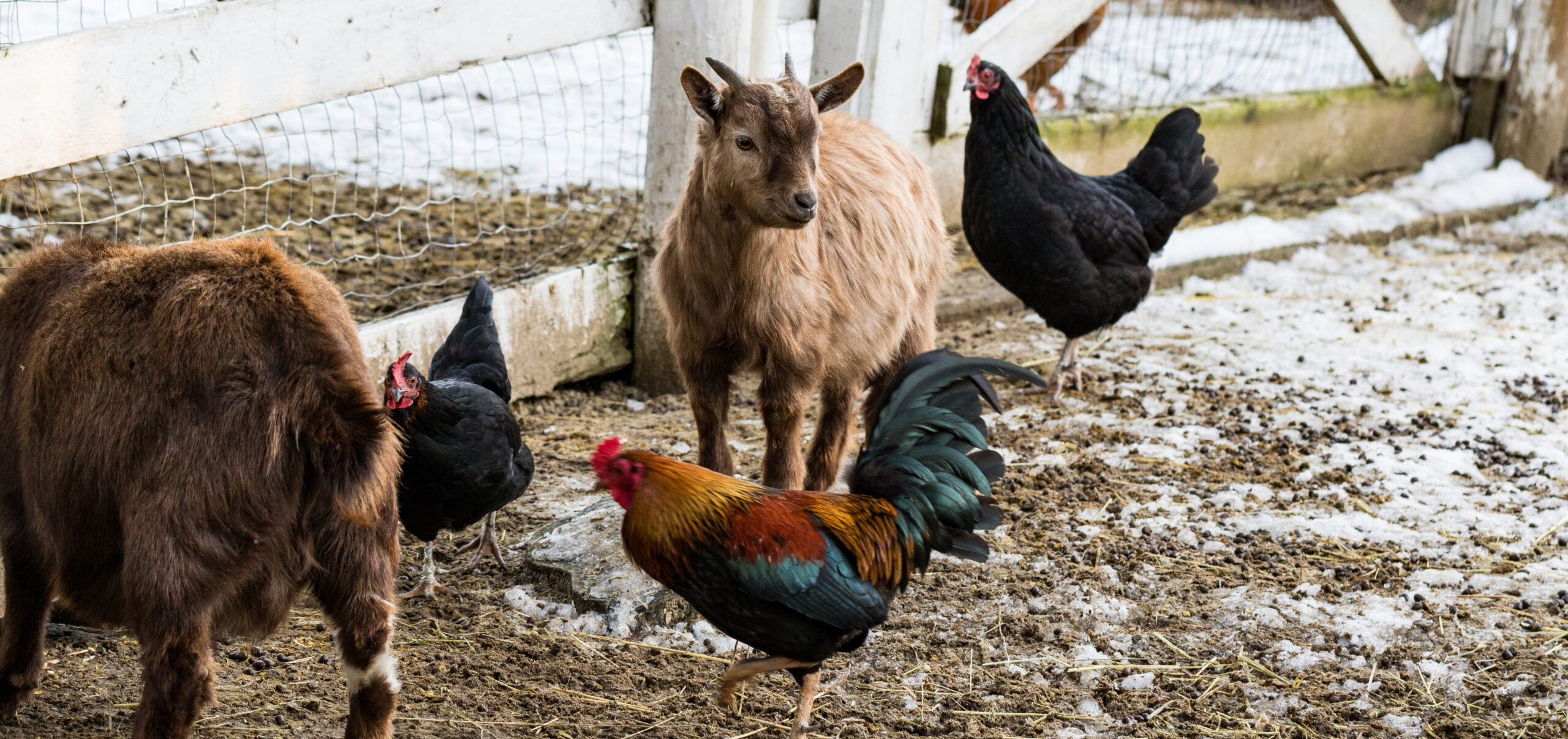
Like Sally, most of the goat owners in this situation are breeders, meaning they sell live animals for breeding purposes. Because of the low sensitivity of the ELISA and the significant chances of false-positive results on farms where there are poultry, I strongly urge all breeders to avoid using the ELISA and instead use the fecal PCR. I also urge them to test all adult animals in their herd annually. It is vital that breeders do not sell MAP-infected goats for the sake of their business and the sake of their particular goat breed. Thus, they should invest in the best diagnostic test for Johne’s disease available and test their herd annually, always using USDA-approved labs.
To limit the cost of this diagnostic testing, owners should use laboratories that offer to do sample pooling. The owner or his/her veterinarian submits individual fecal samples. The laboratory then pools equal amounts of feces from 5 goats, ideally based on age (5 oldest goats in the first pool, etc.) and does a single PCR on the fecal pool. If the PCR is negative, then all the goats contributing to that pool are declared negative, i.e., no MAP detected in feces.
Prices for these laboratory tests vary but using WVDL rates for 2021 I made cost some cost comparisons. The cost of pooled PCR for Sally’s 11 goats would be $70.04 for 2 pooled PCRs for the first 10 goats (5/pool) and $30.89 for the individual PCR on the 11th goat for a total of $100.93 (plus a $10 accession fee). This equates to a cost of $10.08/goat. The cost of doing an ELISA on these goats at the WVDL would be $6 x 11 plus $10 = $76 or $6.91/goat. Note: had Sally’s herd been only 10 goats the per goat cost for pooled PCR would have been only $7.28.
In sum, pooled fecal PCR is the test of choice for goat breeders. It is roughly 3 times more sensitive (better able to detect MAP-infected goats), has higher specificity (rare false-positives) and is comparable in cost to the ELISA when sample pooling is done by the lab.
My “chicken theory” is just that, a theory based on observations when working with goat owners who have unexpected positive ELISA results. I hope that some talented young researcher will explore this further. Perhaps the microbe triggering these false-positive ELISAs would be a candidate for a live avirulent vaccine for Johne’s disease.
MAP IN WILDLIFE
2021-09-30 16:26:37An international team of investigators reported on MAP infections in domestic sheep and guanaco in Patagonia. Their work was published in the journal Transboundary and Emerging Diseases.
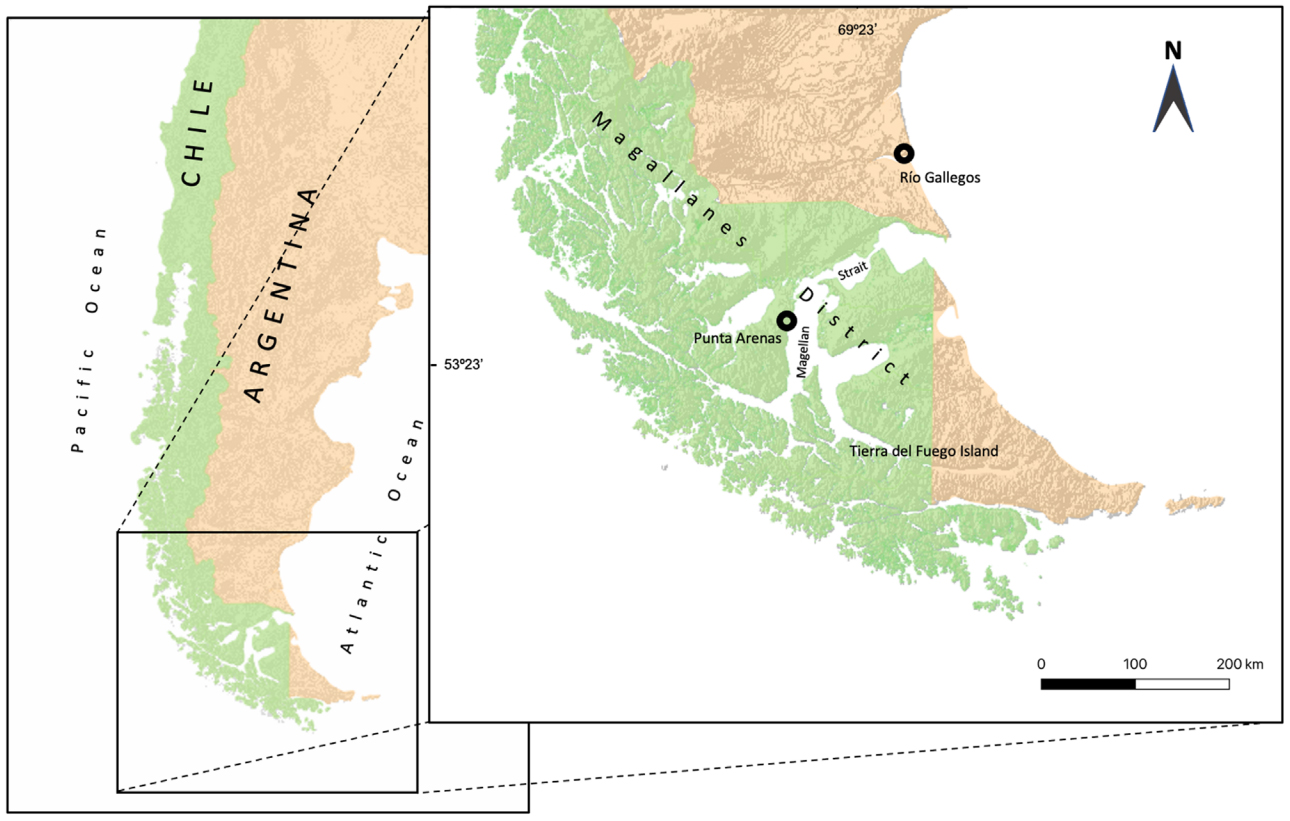
ABSTRACT
Natural herbivore populations have experienced uninterrupted pressures from direct and evident domestic-wildlife interactions and competition, to indirect or less obvious ones such as pathogen transmission. Thus, pathogen spillover between wild and domestic animals is a constant concern because the domestic–wildlife interface represents the ecological frontier in which pathogen transmission takes place in both directions. In Patagonian steppe communities, extensive sheep ranching and guanaco (Lama guanicoe) populations coexist, and guanaco have shown to be infected by pathogens such as Mycobacterium avium subspecies paratuberculosis (MAP) likely transmitted from livestock. MAP causes chronic enteritis and affects mostly domestic ruminants. We evaluated MAP prevalence and pathogen shedding in both species’ faeces collected in non-shared and shared sites according to presence/absence of sheep and guanaco along a year, in four different seasons (autumn, winter, and spring 2018, and summer 2019). Our results indicate that MAP circulates in both sheep and guanaco populations with self-sustained transmission; however, both species differ in their levels of competence. We detected higher pathogen shedding in sites occupied by sheep, suggesting that sheep populations may be the main source of infection for susceptible animals due to their large numbers which drive MAP dynamics.
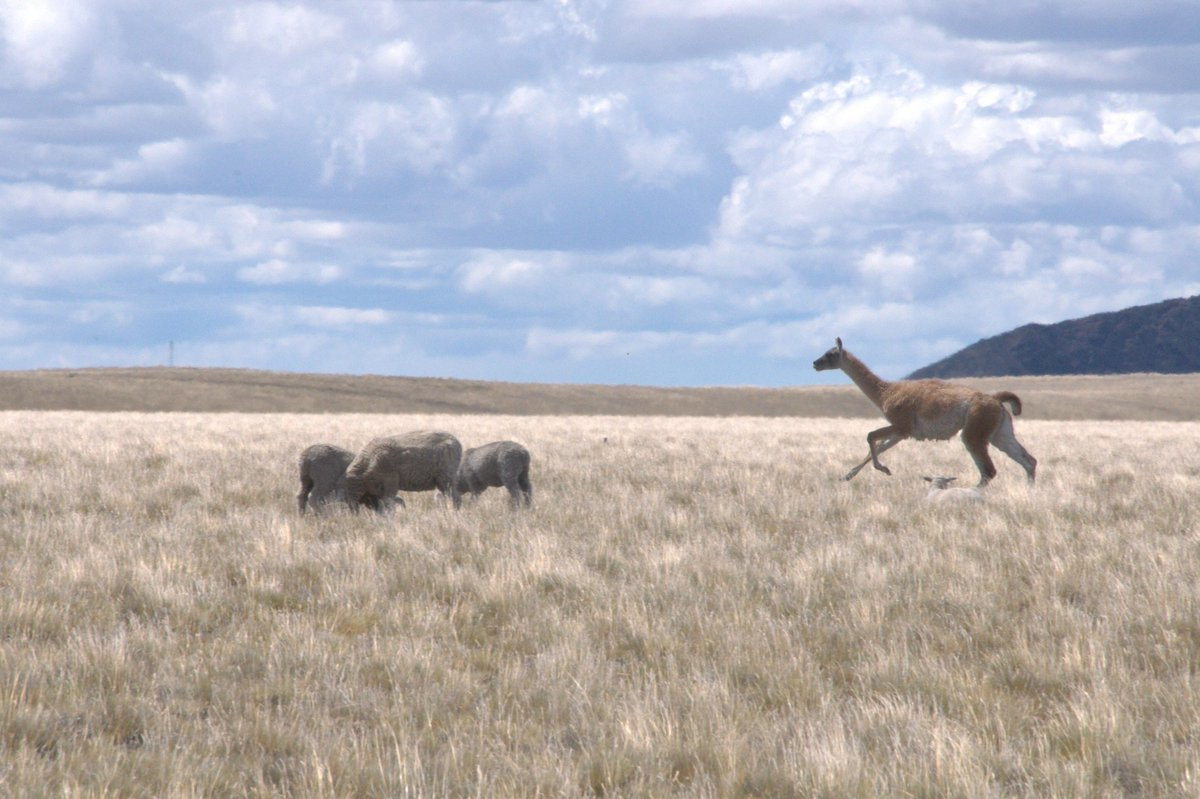
COMMENT
As the global MAP epidemic continues unabated the infection is increasingly spreading to wildlife. This article about sheep sharing pastures and also MAP with guanaco. Many captive and free-ranging wild ruminants and camelids, like the guanaco, are at risk of MAP infection spillover from domestic livestock.
[caption id="attachment_3675" align="aligncenter" width="2560"]
From Wikipedia: Although the species is still considered wild, around 300 guanacos are in U.S. zoos, and around 200 are registered in private herds. Guanacos have long been thought to be the parent species of the domesticated llama, which was confirmed via molecular phylogenetic analysis in 2001, although the analysis also found that domestic llamas had experienced considerable cross-hybridization with alpacas, which are descended from the wild vicuña. This Wikipedia page tells you more about guanaco.[/caption]
IRISH JD PROGRAM
2021-09-15 15:23:40Lawrence Gavey and colleagues from Animal Health Ireland and the Centre for Veterinary Epidemiology and Risk Analysis, UCD School of Veterinary Medicine, University College Dublin published an article describing the Irish Johne’s disease (JD) control program. Their Open Access article appeared August 27, 2021, in the journal Frontiers in Veterinary Science.
ABSTRACT
The Irish Johne's Control Programme (IJCP) provides a long-term approach to the voluntary control of Johne's disease (JD) in Ireland, strongly supported by Irish cattle industry leadership. It leverages the establishment of Animal Health Ireland for control of animal diseases not regulated by the European Union. The IJCP has four objectives: facilitate protection against spread of JD to uninfected farms; reduce the level of infection when present; assure markets of JD control in Ireland; and improve calf health and farm biosecurity. Key IJCP elements are an annual veterinary risk assessment and management plan (VRAMP), annual whole herd test (WHT) by ELISA on blood or milk samples with ancillary faecal PCR testing of ELISA reactors, and Targeted Advisory Service on Animal Health (TASAH) investigations of infected herds. There are pathways for assurance of herds with continuing negative tests and for management of test-positive herds. Herdowners are responsible for on-farm activities, and specifically-trained (approved) veterinary practitioners have a pivotal role as technical advisors and service providers. The programme is supported by training of veterinarians, performance of testing in designated laboratories, documentation of policies and procedures, innovative data management for herd and test activities and for programme administration, training, and broad communication and awareness activities. Tools and systems are refined to address emerging issues and enhance the value of the programme. An Implementation Group comprising industry, government and technical leaders sets strategic direction and policy, advised by a Technical Working Group. Shared funding responsibilities are agreed by key stakeholders until 2022 to support herds in the programme to complete requirements. Herd registrations have increased steadily to exceed 1,800. National bulk tank milk surveillance is also being deployed to identify and recruit test-positive herds with the expectation that they have a relatively high proportion of seropositive animals. The programme will continue to innovate and improve to meet farmer and industry needs.
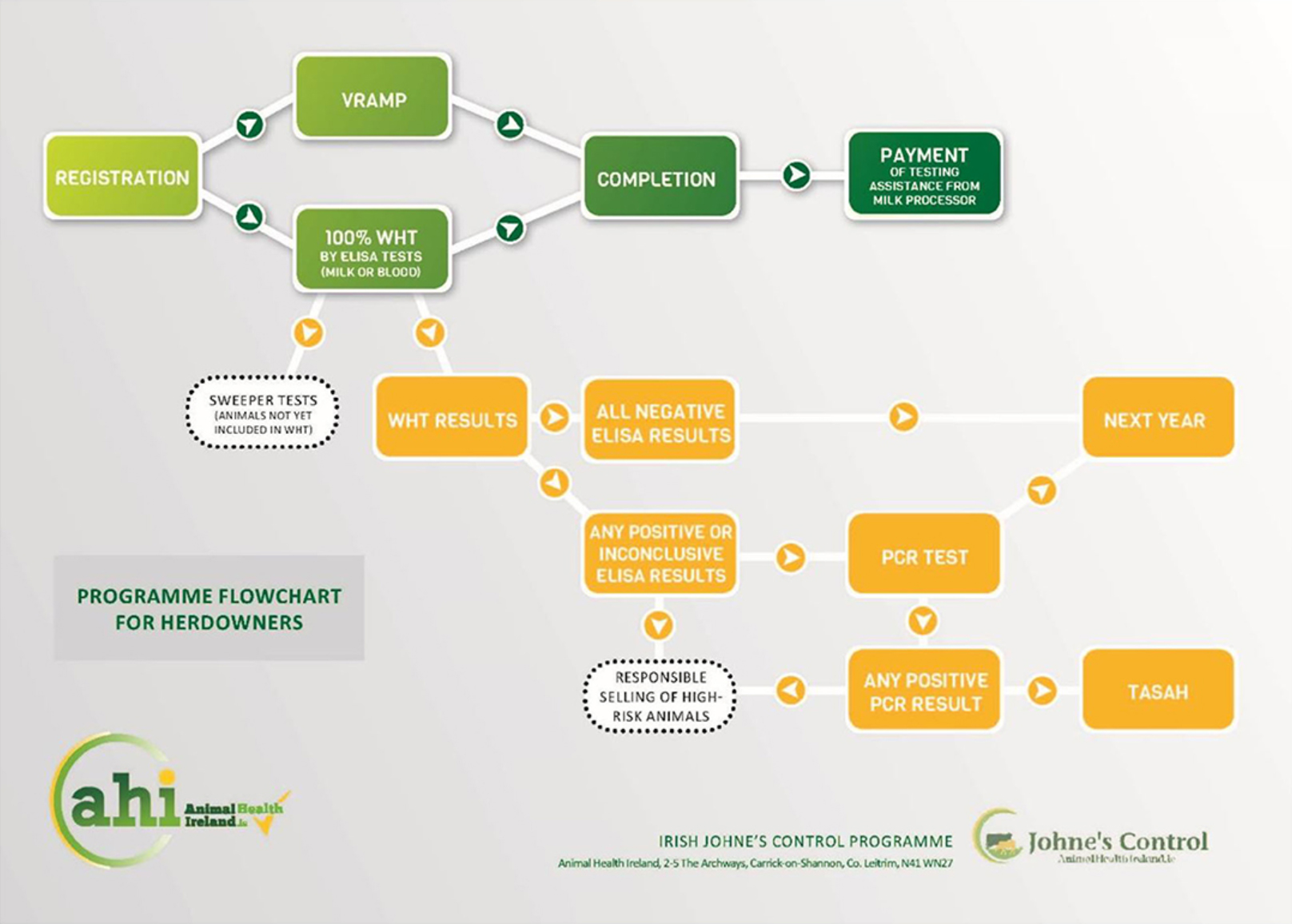
Website editor’s note: According to the Irish Cooperative Organisation Society’s website, “There are 18,000 dairy farmers in Ireland, producing milk of an outstanding quality from over 1.2 million dairy cows. Irish dairy farms are family run enterprises, supplying 6.4 billion litres of milk in 2015.” This means that the Irish Johne’s Control Programme has enrolled roughly 10% of Irish dairy herds this far.

COMMENT
The Irish JD program has all the same elements found in most national Johne’s disease programs:
1. Education of producers and veterinarians.
2. Herd risk assessments to identify when and where MAP transmission occurs on the farm.
3. Changes to animal husbandry methods to limit MAP transmission.
4. Regular application of diagnostic tests to all adults in the herd for many years.
5. Consistent actions based on the diagnostic test results.
6. Monitoring progress.
The program is also available for beef cattle producers.
The authors of this publication discuss the challenges for sustaining and growing the program stating: “The judgement of insufficient reward for the risk, inconvenience and expense of participation, especially for low-risk herds, remains a constant limitation and is recognised as an inhibitor to uptake of programmes internationally”.
This impediment could be addressed by paying farmers more for milk from herds that are test-negative or deemed to be low-risk. Currently, according to the Animal Health Ireland (AHI) website, Irish milk processors pay dairy farmers a set amount per cow each year depending on whether they are in the test-negative pathway or the test-positive pathway and the number of years in the program, as shown below (copied from the AHI website).
Funding Support per Eligible Animal by Year of Registration
Test-negative pathway
- €2.75 ($3.25)**
- €2.06 ($2.43)
- €1.38 ($1.63)
- Nil*
Test-positive pathway
- €2.75 ($3.25)
- €2.75 ($3.25)
- €2.75 ($3.25)
- €2.75 ($3.25)
*It is anticipated that after four consecutive years of test-negative results, herds in the text-negative pathway will move to a lower-intensity maintenance testing programme – details of which are to be announced in the near future.
** Currency conversion based on values on 11-SEP-2021.
There are two problems with this. First, while I am sure the financial support is welcome, it represents a very small portion of the actual costs that dairy producers incur when trying to control JD. For more on the costs of a JD control program see Table 6 in Roch, et al. Journal of Dairy Science, 2020 (Open Access).
Secondly, in this plan for test-negative herds there appears to be a financial disincentive to remain in the program. It seems to me that test-negative herds should be paid an increasing amount for each year they remain in the program and the test-positive herds that do not show progress in the program after 3 years should have a decreasing rate of financial support. Farmers must spend money not only on annual diagnostic testing of their herd but also the management changes necessary to limit MAP transmission. They do this for the health and welfare of their animals but also for the health and safety of the public and the profitability of the Irish dairy industry as a whole.

In 2019, according to the Irish Dairy Board website, Irish dairy exports reached €4.4 billion, making it the largest food and drink export category. This was the third consecutive year in which the value of dairy exports exceeded the €4bn mark. Protection and expansion of export markets are a major driver for the Irish dairy industry as the graphic below shows.
Profits from the export of dairy products, that rely on the eco-friendly, wholesome and healthy image of Irish dairy products with a zero or very low MAP infection rate, need to be equitably shared with the people who make this possible, the Irish dairy producers.
UK JD PROGRAM
2021-09-09 14:43:31In 2009 Dairy UK, milk processor body set up an industry initiative with stakeholders from the dairy industry called Action Johne's. All UK dairy farms have a single supply contract with a designated buyer, who has control over the standards to which the milk is produced. This has progressed over the years from a Johne's Disease (JD) education and engagement program to a more structured framework for the control and management of Johne's Disease in the UK dairy herd called the National Johne's Management Plan (NJMP).

In 2017 the scheme structure involved the training or more than 1000 veterinarians to be Approved JD Advisors through the British Cattle Vet Association and a campaign through the milk buyers to ensure their farmers had undertaken an annual risk assessment in conjunction with a trained and accredited Johne's Veterinary Adviser and selected an appropriate control strategy from six possible options. The UK national farm assurance program (Red Tractor) incorporated the NJMP into the dairy farm standards in 2020, effectively making it mandatory to be part of the NJMP, resulting in 95% of all UK dairy farmers now being included in the scheme.
Dr. Pete Orpin, Chair of the Johne’s Technical Action Group has provided the document updating the UK National Johne's Management Plan and a link to videos describing the UK program and the progress it has made to date.
COMMENT
The UK program has all the same elements found in most national Johne’s disease programs:
- Education of producers and veterinarians.
- Herd risk assessments to identify when and where MAP transmission occurs on the farm.
- Changes to animal husbandry methods to limit MAP transmission.
- Regular application of diagnostic tests to all adults in the herd for many years.
- Consistent actions based on the diagnostic test results.
- Monitoring progress.
What is special about the UK program is that the main costs of implementing the program have been born by the farmers and milk processors, and indirectly by the milk market. There has not been any State involvement.
COPPER VS MAP
2021-09-01 15:46:37 Pamela Steuer, working on the laboratory of Miguel Salgado at the Universidad Austral de Chile, published a series of three articles on the effects of copper ions on Mycobacterium avium subsp. paratuberculosis (MAP). This news story summarizes those three articles.
Pamela Steuer, working on the laboratory of Miguel Salgado at the Universidad Austral de Chile, published a series of three articles on the effects of copper ions on Mycobacterium avium subsp. paratuberculosis (MAP). This news story summarizes those three articles.
The first study, published in2018 in BMC Microbiology, showed that copper ions resulted in a significant reduction of MAP in suspended in saline (PBS), although some MAP survival on some occasions was observed.
The second study, published in 2020 in the Journal of Applied Microbiology, showed that copper ions have a significant inactivating effect on MAP as well as certain other bacterial communities found in naturally contaminated cow’s milk. However, there were some copper-tolerant MAP strains.
The third study, published in the July 2021 issue of Animals (Open Access), attempted to use copper treatment of milk to prevent infection of calves on farm. Below is the full abstract of that publication.

ABSTRACT
One of the important routes of Mycobacterium avium subsp. paratuberculosis (MAP) transmission in dairy calves is milk. The aim of the present study was to assess the efficacy of milk treatments to prevent MAP infection transmission to calves. A one-year longitudinal study was carried out. Newborn calves were assigned to one of four experimental groups: 5 calves received naturally MAP-contaminated milk, 5 calves received copper treated milk, 4 calves were fed calf milk replacer, and 3 were fed UHT pasteurized milk. MAP load in milk was estimated. Infection progression was monitored monthly. After one year, calves were euthanized, and tissue samples were cultured and visually examined. MAP was undetectable in milk replacer and UHT milk. Copper ion treatment significantly reduced the number of viable MAP in naturally contaminated milk. Fecal shedding of MAP was observed in all study groups but began earlier in calves fed naturally contaminated milk. Paratuberculosis control programs must place multiple hurdles between the infection source, MAP-infected adult cows, and the most susceptible animals on the farm, young calves. As our study shows, strict dependence on a single intervention to block infection transmission, no matter how important, fails to control this insidious infection on dairy farms.
COMMENT
This series of studies opens new avenues of investigation on use of copper to control of MAP. There are many applications of copper to kill MAP in settings other than the farm that can be explored. However, as the on-farm study showed, controlling MAP in dairy cattle requires multiple complimentary strategies to be effective.
The fact that a Chilean institution studied the effect of copper on MAP is no surprise. Chile produces more than one quarter of the world's copper and is also by far the country with the largest copper reserves.
MAP AND ALZHEIMER’S
2021-08-06 15:05:54Dr. C.T. Dow has published a thought-provoking article (11 pages with 169 references) proposing that the inflammatory response to a MAP infection of humans could lead to Alzheimer’s disease. The article appears in the August issue of Frontiers in Immunology.

ABSTRACT
This article prosecutes a case against the zoonotic pathogen Mycobacterium avium ss. paratuberculosis (MAP) as a precipitant of Alzheimer’s disease (AD). Like the other major neurodegenerative diseases AD is, at its core, a proteinopathy. Aggregated extracellular amyloid protein plaques and intracellular tau protein tangles are the recognized protein pathologies of AD. Autophagy is the cellular housekeeping process that manages protein quality control and recycling, cellular metabolism, and pathogen elimination. Impaired autophagy and cerebral insulin resistance are invariant features of AD. With a backdrop of age-related low-grade inflammation (inflammaging) and heightened immune risk (immunosenescence), infection with MAP subverts glucose metabolism and further exhausts an already exhausted autophagic capacity. Increasingly, a variety of agents have been found to favorably impact AD; they are agents that promote autophagy and reduce insulin resistance. The potpourri of these therapeutic agents: mTOR inhibitors, SIRT1 activators and vaccines are seemingly random until one recognizes that all these agents also suppress intracellular mycobacterial infection. The zoonotic mycobacterial MAP causes a common fatal enteritis in ruminant animals. Humans are exposed to MAP from contaminated food products and from the environment. The enteritis in animals is called paratuberculosis or Johne’s disease; in humans, it is the putative cause of Crohn’s disease. Beyond Crohn’s, MAP is associated with an increasing number of inflammatory and autoimmune diseases: sarcoidosis, Blau syndrome, autoimmune diabetes, autoimmune thyroiditis, multiple sclerosis, and rheumatoid arthritis. Moreover, MAP has been associated with Parkinson’s disease. India is one county that has extensively studied the human bio-load of MAP; 30% of more than 28,000 tested individuals were found to harbor, or to have harbored, MAP. This article asserts an unfolding realization that MAP infection of humans 1) is widespread in its presence, 2) is wide-ranging in its zoonosis and 3) provides a plausible link connecting MAP to AD.
COMMENT
(excerpt from the discussion section of the article)
This article suggests steps to further investigate this potentially fertile line of inquiry: 1) determine population-based MAP “bio-load”, 2) use optimized blood-based biomarkers to determine AD risk, 3) test for MAP in those with elevated AD risk vs. healthy controls. Concurrently, interventions could be initiated to 1) eliminate MAP from animals, the environment, and the food chain, 2) initiate clinical trials to test iterations of anti-mycobacterial agents shown to have benefit for AD. Parsimoniously, when searching for new directions in the efforts against AD, look at the MAP.
MAP & PUBLIC HEALTH
2021-07-15 11:00:47Lauren and John Todd Kuenstner have published an article titled: Mycobacterium avium ssp. paratuberculosis in the Food Supply: A Public Health Issue which appears in the most current issue of Frontiers in Public Health.
Article Description
This article examines the policy implications of Mycobacterium avium subspecies paratuberculosis (MAP) as a zoonotic pathogen and the public health risks posed by the presence of MAP in food, particularly milk products. Viable MAP has been cultured from commercially pasteurized milk in the US. Dairy pasteurization standards and regulations are examined in light of this finding. On the basis of the precautionary principle, the authors suggest options to reduce exposure to MAP, including (1) increased federal authority to regulate pasteurization of all dairy products, (2) modification of pasteurization standards in order to more effectively kill MAP, (3) removal of the Pasteurized Milk Ordinance (PMO) provision that allows states to override federal policy in intrastate dairy sales, and (4) creation of a mandatory Johne's Disease Control Program. These measures would reduce human exposure to MAP and may reduce the risk of diseases associated with MAP.
Comment
The Precautionary Principle is used in EU countries but less so in the US. Wikipedia does an excellent job describing this principle that guides development of many governmental regulations. It is worth reading the entire article, including criticisms are the very end.
« Previous 1 2 3 4 5 6 … 18 Next »